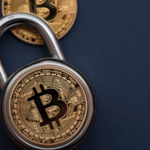Sending Bitcoins from one wallet to another is fairly simple and generally requires two basic things: a cryptocurrency wallet with some coins and a public key address to complete the transaction. Since Bitcoin is a peer-to-peer network, only the two entities executing the transaction should be involved.
But depending on the type of wallet used, the exact process of a Bitcoin transfer may be slightly different. The process is generally the same for different types of cryptocurrency as well.
Table of Contents:
How does sending Bitcoin on the Blockchain work?
In a broad sense, sending Bitcoins from one wallet to another involves a digital transaction: an exchange of addresses and then a transfer of proprietary data that is then recorded on the Bitcoin blockchain.
As such, the basics of how to transfer Bitcoin involve two crypto wallets, a Bitcoin address, and usually a transaction fee.
In practice, it’s often as simple as sending money to someone using a p2p platform, such as Venmo or PayPal.
Is sending Bitcoin free?
The short answer: No. Sending Bitcoins is not free. Since miners or Bitcoin blockchain participants have to process a transaction and record it on the blockchain, there is work to be done – and usually, those who execute the transactions have to pay the miners to do the work.
This usually takes the form of a network fee, which is paid to the entities we exercise and validate the data on the blockchain.
How Bitcoin fees are determined
Crypto fees, including those for sending Bitcoin, operate on a supply and demand pattern. Basically, a blockchain only has so many assets – such as validators and miners – that can process the data and record it on the network. So, when many entities are competing for those resources, it can cause fees to rise. Similarly, when demand is low, fees can also be lower.
If you want your transaction to move forward faster, paying higher fees can help make it happen. But the ongoing rate for Bitcoin fees fluctuates with supply and demand on the network. BTC Network Fee Setting
As mentioned, you can adjust the fee you pay in an effort to speed up the speed of your transaction. The nuts and bolts to do this will depend on the specific crypto wallet you’re using, but it usually involves setting a custom network fee when setting up a transaction from your crypto wallet. If you want to pay a lower fee, your transaction will likely take longer, but the higher the fee you pay, the faster your transaction is likely to execute.
Again, it’s all about supply and demand, and validators and miners on the blockchain respond to incentives: aka money.
How to send Bitcoin in 3 easy steps
First of all, if you failed to create a crypto wallet, you will have to do it before anything else. But after that, with almost all crypto wallets, the process of conducting a bitcoin transfer involves the same general steps, which should be followed carefully:
1. Enter your address
You need to direct your transaction to the right place, which means entering the address of the wallet you want to send Bitcoin to. Users should always double-check the address they are sending to. Some hardware wallets will explicitly remind users to do this. Whenever possible, using a QR code address may be the preferred method, just to be absolutely certain.
2. Enter the amount
Then, enter the amount or amount of Bitcoin you want to send. When entering the amount of Bitcoins to be sent, some wallets may allow users to dictate in fiat terms (such as US dollars). It is important to note which currency is displayed to avoid errors.
If a user’s wallet supports multiple cryptocurrencies, it is also important to select the correct coin. Sending Bitcoin (BTC) to a bitcoin cash address (BCH), for example, could result in a permanent loss of funds. Sending any cryptocurrency to an address for another cryptocurrency will generally send them into digital oblivion where they cannot be recovered in any way, similar to sending money to a stranger’s bank account, with no avenue.
For larger transactions, it might be a good idea to send a small amount of Bitcoin as a test, to make sure the address is correct.
3. Transmission by sending
Transmit the transaction by pressing “send”. When sending from some desktop wallets, users may be prompted to select the network rate before clicking send, as discussed. And again, higher-fee transactions usually receive a higher priority from Bitcoin miners and will reach their destination in a shorter amount of time.
When you use exchange-hosted wallets and most hardware wallets, the network fee amount will be automatically chosen for you.
How can I receive Bitcoins?
Receiving Bitcoin only requires a user to have a wallet and a public address for that wallet. To receive funds, simply provide the public address to the person who wants to send you Bitcoins.
There are really two steps required to receive Bitcoins:
1. Open your wallet and select “receive” or “generate new address”. Your wallet should offer one of these options, or something similar.
2. Share the address with the Bitcoin sender. The address can come in the form of a string of numbers and letters or as a QR code. The QR code can be sent as an image or scanned directly from a smartphone.
There are also services that allow merchants to accept bitcoin as payment for goods and services. Most often, the service will immediately convert coins into local currency and hand over the funds to the trader in exchange for a small fee.
Can I send Bitcoin to a non-Bitcoin address?
If you send Bitcoin to a non-Bitcoin address, such as an Ethereum address or a traditional bank account, the transaction will likely fail and you may lose your Bitcoin. This is because Bitcoin and other cryptocurrencies are built on different blockchain networks that are not compatible with each other.
When you send a cryptocurrency transaction, it must be verified by the network before it can be completed. If you send Bitcoin to a non-Bitcoin address, the network will not be able to recognize the destination address and will not be able to verify the transaction. As a result, the transaction will likely fail and your Bitcoin will be lost.
It is important to double-check the recipient’s address before sending a cryptocurrency transaction to make sure it is the correct address type and is accurate. If you accidentally send Bitcoin to the wrong address, it may be difficult or impossible to recover your funds, so it’s important to be careful and take the necessary precautions to avoid mistakes.
Send Bitcoin to another user
Transferring Bitcoin to another
wallet works a lot like sending Bitcoin to another user. Simply generate a public key address for the receiving wallet and send coins from the sending wallet.
In fact, the process is more or less exactly the same, since transferring or sending cryptocurrencies to a different crypto wallet is no different in any practical way. As such, the way to do this mirrors much of what we’ve already covered, whether you’re transferring Bitcoin to another person’s wallet or entity, or between two wallets you own:
You will need a Bitcoin address to send or transact. Having this is essential, otherwise, it is like throwing a letter into the mail without writing an address on the envelope.
After that, it’s about using your wallet’s transfer interface to select the amount of Bitcoin to transfer and to determine the network fee you’re willing to pay. If you are transferring Bitcoin between two wallets you own, you may not be in a huge hurry to execute the transaction. (This could be an example of a time when you agree to paying a low network fee, although the transaction may take longer.)
With all this in squares, it’s just a matter of hitting “send” to execute the transaction. Again, the specifics of these steps will depend entirely on the crypto wallet you’re using to send your Bitcoin.
And another thing to be aware of: the recipient (even if it’s you) doesn’t need to pay any network fees to accept incoming Bitcoin transfers. Those fees shall be paid by the entity initiating the transfer. So, if you’re transferring Bitcoin between two wallets you own, you won’t be fooled by multiple fees – you’ll only have to pay once.
Can you send money using Bitcoin?
In a Bitcoin transaction, the coin balance represents the monetary value. So, in a way, yes, you can send money using Bitcoin. But using a web, desktop, or hardware wallet to send fiat currency (such as US dollars, euros, or yen) is not something commonly done, although some multi-currency wallets might have this feature.
Some cryptocurrency exchanges also allow fiat currency trading, so it may theoretically be possible to send fiat currency to another user on that same exchange. The Bitcoin network alone, however, cannot currently be used to send anything other than Bitcoin.
Can I send Bitcoin to someone without a wallet?
Using traditional wallets, there is no way to send Bitcoin to someone without a wallet.
As discussed, you wouldn’t try to send a letter to someone without writing an address on the envelope – the postman wouldn’t know where to take it. Similarly, you can’t send Bitcoin to someone who doesn’t have a crypto wallet, as they would have no way to receive the Bitcoin and you wouldn’t have a way to actually send BTC without a digital address.
There are, however, some workarounds.
For example, there are some services available that allow people to send Bitcoin to someone else using alternative methods, such as an email address. In these cases, the coins are kept in a new wallet until they can be requested by the recipient. So, technically speaking, the recipient would still need to get a crypto wallet to recover his Bitcoin, at least at some point.
Of course, it is also possible to own Bitcoin through another round-about way: via an investment vehicle such as a Bitcoin-based exchanged fund (ETF). ETFs are like baskets of investments and can contain a mixture of stocks, bonds and other assets. Crypto ETFs can and do contain blends of crypto assets or cryptocurrency-backed assets, giving investors exposure to the market.
So while it’s not exactly the same, there is a way to own or have some exposure to the Bitcoin market without a wallet.
The Takeaway
Sending Bitcoins only requires a wallet with some funds and the address (public key) or QR code of the wallet you want to send Bitcoin to. The exact details may vary depending on the wallet used to send the transaction, but the sender doesn’t have to worry about the type of wallet the recipient uses.
You should also consider things like fees when sending Bitcoin, but keep in mind that only the sender is on the hook for any applicable fees. All in all, sending or transferring Bitcoin to a new wallet is a fairly simple process, as long as you’re careful to focus on the details!


